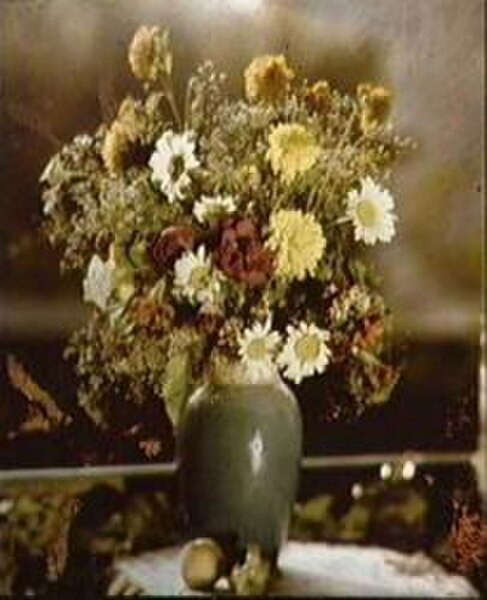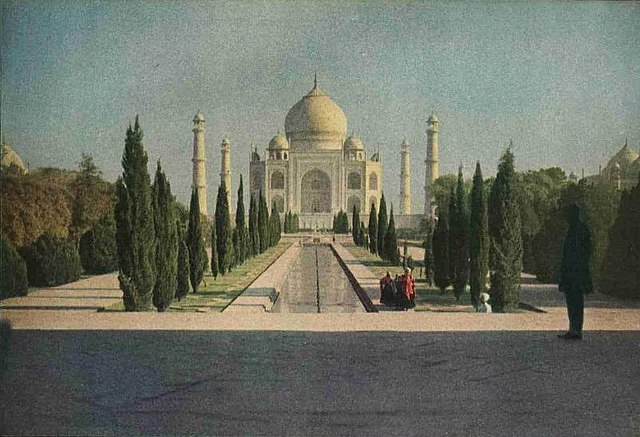Jonas Ferdinand Gabriel Lippmann was a Franco-Luxembourgish physicist and inventor, and Nobel laureate in physics for his method of reproducing colours photographically based on the phenomenon of interference. His parents were French Jews.
Lippmann in 1908
Professor Lippmann in the Sorbonne laboratory for research in physics (Bibliothèque de la Sorbonne, NuBIS)
Lippmann's electrometer (1872)
A colour photograph made by Lippmann in the 1890s. It contains no pigments or dyes of any kind.
Color photography is a type of photography that uses media capable of capturing and reproducing colors. By contrast, black-and-white or gray-monochrome photography records only a single channel of luminance (brightness) and uses media capable only of showing shades of gray.
The first color photograph made by the three-color method suggested by James Clerk Maxwell in 1855, taken in 1861 by Thomas Sutton. The subject is a colored ribbon, usually described as a tartan ribbon.
A color photograph made by Gabriel Lippmann in the 1890s, containing no pigments or dyes of any kind.
A 1908 Autochrome Lumière photograph of American author Mark Twain.
A 1914 color photograph of the Taj Mahal published in a 1921 issue of National Geographic magazine.







